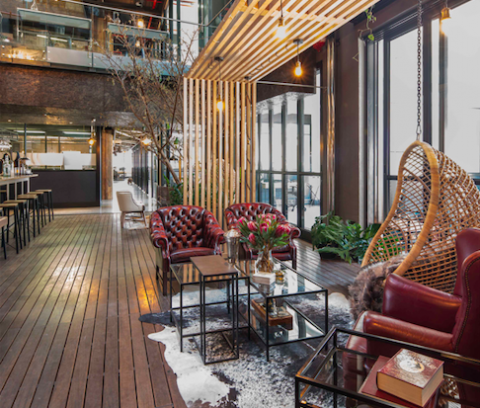Technology, Solutions and Innovations
Is Your Office Smart Enough?
Office needs have changed since the pandemic, with many companies downsizing or simply reassessing their workplace needs, thanks to enforced remote working practices. Robyn Bailey is head of design and business development for Tétris South Africa, an international company specialising in office design. She says there is no one-size-fits-all solution, as the number of users, existing layouts and pressure points differ.
“In feedback from local clients, we’ve seen a shift from aesthetic goals to health-focused designs,” Bailey says of 2020 developments. “We expect to see many companies using portals or apps to control employee experience and meet government guidelines. They will help organise staggered working hours and start times, and facilitate health questionnaires, biometrics, room booking, lighting and temperature control, as well as enabling amenity-rich conveniences such as touchless food ordering.”
Flexible spaces
Growthpoint Properties’ head of asset management for offices, Paul Kollenberg, agrees that space tailored to its use will play a bigger role. “Think spaces to meet and collaborate, to do admin tasks or just concentrate, instead of a staff member having one dedicated desk for everything,” he says.
“We believe offices are going to be a place to plug in – where people plug into a team and corporate culture, where teams plug into creative thinking and problem solving, where business plugs into innovation, and where a remote-working network can plug into their company server and resources,” says Kollenberg.
Bailey sees a long-term shift to an increasingly “augmented workplace”, with “smart spaces” enabling how staff use shared spaces via phone apps. Visitors will be able to check into a building via the management system, be screened and given directions to the meeting room or workspace.
With cleaning, sanitation and enhanced air filtration systems an ongoing focus, smart offices will enable service teams to book slots for stringent cleaning, or use data to identify high-traffic areas for focused cleaning.
If companies decrease physical workstations, employees will log on to see occupancy of their office space and locate open desks, with sensor technology linked to apps. For office managers, this understanding of who is in what space will be key to creating strategies to manage people flow. “Space planners may ask why Tuesday and Thursday afternoons are busier. Or why a room isn’t used as often,”
says Bailey.
Smart design

“Questions from our clients now are: what materials are we using? How easy are they to clean? And how do we design pause areas and coffee stations to ensure that cleanliness and social distancing are maintained?” says Bailey.
Tétris is one of a handful of companies using Building Information Management (BIM) 360 for interior design on its projects in South Africa. This cloud-based platform enables teams and clients to collaborate in multiple geographies, producing 3D virtual walkthroughs, with feedback and changes implemented in real time. Says Bailey: “We’re working on a project in Cape Town for a pharmaceutical client in the US, having a small team on the ground and a larger project team in the Johannesburg office.”
Kollenberg says offices will become centres around which regional and remote working can revolve. “While offices will change and be reconfigured, their role as business spaces will remain as relevant as ever. Culture, collaboration and communication are enabled by offices, as are the cues of leadership.”
Remote office work
Astudy of COVID-19-related lockdown impact on employee digital communication patterns in 16 large metropolitan areas in North America, Europe and the Middle East found that employees changed their communication activities when working remotely. In weeks following lockdown, employees increased their number of meetings and emails sent, and adjusted work schedules with significant, durable increases in lengths of the average
work day.
The authors speculated that, on one hand, the flexibility to choose working hours to accommodate household demands may empower employees by affording freedom over their schedules. But they also said the change in work schedules could also be thanks to a blurred distinction between work and personal life, where it’s easier to overwork due to a lack of clear delineation between office and home.
Source: Collaborating during Coronavirus: the Impact of COVID-19 on the Nature of Work. National Bureau of Economic Research Working Paper No. 27612, July 2020.






 Sign-up and receive the Business Media MAGS newsletter OR SA Mining newsletter straight to your inbox.
Sign-up and receive the Business Media MAGS newsletter OR SA Mining newsletter straight to your inbox.